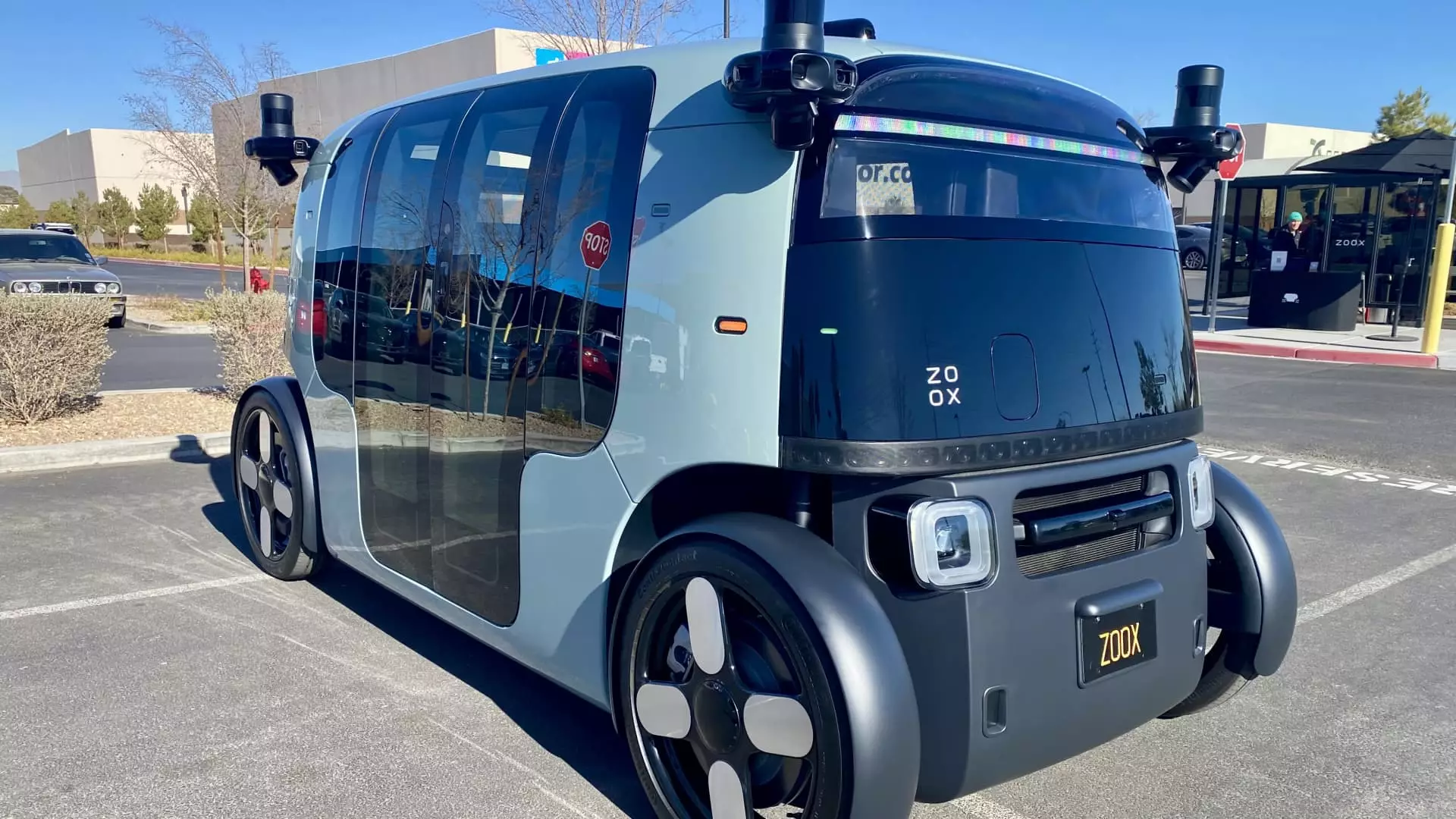As we venture into 2023, the race for effective and operational autonomous vehicles is at a pivotal juncture, significantly embodied by Amazon’s investment in its autonomous vehicle division, Zoox. The startup, which Amazon acquired for $1.3 billion in 2020, is aiming to transition its innovative robotaxi technology from experimental stages to being a viable commercial service. Despite the waning enthusiasm among some investors for autonomous technology and the disbanding of similar ventures by traditional automotive giants such as General Motors and Ford, Zoox remains committed to pursuing its ambitious goals in this sector.
The backbone of Zoox’s strategy relies heavily on its fully autonomous vehicles, crafted purposefully without manual driving capabilities. This approach stands in stark contrast to competitors like Waymo, which has retrofitted existing vehicle models for autonomous operation. Zoox’s distinctive, box-like design, with inward-facing seats and the absence of a driver’s area, has drawn some skepticism but aims to redefine rider experience in urban settings.
Indications point to Las Vegas becoming the first city to experience Zoox’s commercial robotaxi services. With initial tests underway since early 2023, Zoox is preparing to launch its “Early Rider Program” soon, allowing selected users to test the service before a broader rollout to the general public later in the year. San Francisco is positioned as the next significant market for Zoox, which underscores the company’s focus on major urban centers.
Jesse Levinson, co-founder and CTO of Zoox, expresses optimism about the company’s trajectory despite the challenges involved. The testing phase has been crucial; utilizing the vibrant, complex environment of Las Vegas provides a robust opportunity to fine-tune the autonomous system. During recent evaluations, Zoox’s vehicles have demonstrated competent navigation and decision-making abilities, although some observers noted instances of overly cautious behavior that could impede operational efficiency.
While Zoox is positioning itself as a major player in the robotaxi arena, it finds itself trailing behind established competitors like Waymo, which has successfully implemented supervised and unsupervised rides in various markets since 2017. Waymo’s expansion has been characterized by a methodical approach that allows them to handle over 150,000 paid rides weekly across multiple cities. In stark contrast, Zoox remains in its nascent stages, aiming for a significant leap in its operations and deployment within the current year.
Sam Abuelsamid, a notable expert in autonomous technology, underscores the challenge Zoox faces with its business model. Although the technology is showing promise, the financial implications of sustaining a fleet of robotaxis raise critical questions regarding long-term viability. This deliberate approach, while ensuring safety, also postpones the opportunity for generating considerable revenue in a sector where profitability is yet to be established.
The landscape for autonomous vehicles is fraught with regulatory challenges and public safety concerns, particularly after incidents like the October 2023 accident involving GM’s Cruise division, which led to a suspension of services amid allegations of misleading regulators. These incidents contribute to the industry’s broader scrutiny and affect public perception of autonomous technologies as a reliable alternative to traditional driving.
Zoox’s methodical strategy emphasizes safety and public acceptance—a necessary avenue given society’s hesitance toward self-driving technology. As the industry matures, understanding the operational model that can effectively cover costs and yield profitability remains a pressing issue for all players involved. This unpredictability poses a significant barrier, making it uncertain how quickly Zoox can expand beyond its initial markets.
With eyes on widespread deployment by the end of the decade, Zoox’s vision for transforming urban mobility is certainly compelling. However, numerous uncertainties loom over this ambition. Future expansions into cities like Miami and Austin rely on overcoming substantial technological and regulatory hurdles, as well as ensuring that the consumer base feels confident about using autonomous services.
As we monitor Zoox’s next steps, the overarching narrative of the autonomous vehicle market remains as pertinent as ever. The ambition to reshape urban transport in the U.S. hangs delicately between technological advancement and the nuanced realities of awaiting regulatory frameworks, competition, and market acceptance. Zoox’s journey, from an innovative concept to an operational entity, encapsulates the challenges and triumphs inherent in an industry still defining its path forward.

